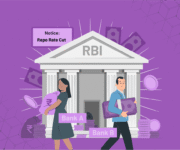In today’s digital age, credit underwriting plays an integral part in determining the financial viability of businesses and individuals. According to reports from Experian and Praxis Global Alliance, India reached an impressive milestone of USD 270 billion in digital lending in 2022. Disbursements also saw an uptick of 11%. To keep up with this growth, robust and efficient credit underwriting is a must-have for financial institutions.
The conventional underwriting process, although effective, often depends on manual assessments, making it laborious and prone to human errors. But with technological advances and the emergence of advanced credit underwriting software, underwriting is poised for a significant shift in the future. This software leverages the power of artificial intelligence (AI), data analytics, and machine learning (ML) algorithms to transform the underwriting landscape with multiple benefits.
This blog post explores the future of credit underwriting software and how credit underwriting software will shape the future of businesses and reshape the financial landscape.
What is Credit Underwriting Software?
Credit underwriting software primarily automates and streamlines the process of assessing creditworthiness. It analyses credit history, income, and debt data, generating a credit score.
The software gives lenders risk evaluations and suggestions for loan terms, interest rates, and amounts. It enables accurate and objective credit determinations, expediting lending procedures and effectively controlling risk by integrating with other systems and utilising machine learning.
Comprehending the future of credit underwriting software is crucial as businesses navigate an increasingly competitive market. Besides streamlining processes and improving risk assessment capabilities, the software promises to influence better lending decisions.
Transforming Business Landscape: Impact of Credit Underwriting Software
As credit underwriting software continues to shape the future of businesses, let’s explore the key areas where its impact is most significant.
1. Enhanced Efficiency
Innovative credit underwriting software simplifies lending operations by automating data collection, processing, and decision-making. It expedites the processing of credit applications and improves customer satisfaction.
Lenders may identify unique credit risks across businesses using analytics and real-time data visibility, which also helps them build comprehensive borrower profiles. These insights improve decision-making by enabling underwriters to make informed decisions and foresee potential contingencies.
Underwriters can also focus on subjective aspects due to the efficiency achieved through automation, which removes duplication in administrative work. By leveraging these technologies, businesses can streamline their procedures, reduce risks, and improve the efficacy of their lending operations.
2. Improved Accuracy
Credit underwriting software uses advanced analytics and rule-based decision-making to facilitate quicker and more accurate credit evaluations while reducing bias and human error. Underwriters can analyse complicated credit risks based on current market trends and borrower behaviour because of real-time data visibility.
Future credit underwriting software will increase accuracy using machine learning algorithms and advanced analytics. These technologies offer accurate evaluations of creditworthiness by analysing large amounts of data.
Therefore, businesses can make well-informed lending decisions, lowering their default risk and enhancing their loan portfolio quality. The outcome is an improved underwriting procedure advantageous to lenders and borrowers.
3. Alternative Data
Fintech companies are including alternative data sources beyond traditional credit bureaus. The emergence of alternate data has proved to be a boon for the underserved. The vast amounts of data available and accessible to lenders equip them with a comprehensive view of the prospective borrower, enabling them to derive new and meaningful insights.
This contributes to developing a complete picture of a person’s or company’s financial behaviour and creditworthiness. Tech businesses are using non-traditional credit bureaus as alternate data sources. They collect data from non-traditional places, including utility bill payments, rental payment histories, social media usage, and smartphone usage.
4. Risk Mitigation
Credit underwriting software conducts a thorough risk analysis using contemporary analytics and data analysis methods. Businesses consider a borrower’s creditworthiness by looking at factors such as income, credit history, debt-to-income ratios, and alternative data sources.
Early warning systems built into the software monitor market trends and borrower behaviour to advise businesses of potential risks and enable proactive risk mitigation. Risk modelling and stress testing abilities assist in determining the likelihood of default and predicting possible losses. In contrast, fraud detection features detect and prevent fraudulent activities, minimising the risk of defaults.
Portfolio monitoring and management tools provide real-time visibility into loan performance, enabling businesses to detect and mitigate concerns quickly.
5. Personalised Lending
In the future, credit underwriting software will offer personalised loan experiences by utilising data analytics and advanced algorithms. After analysing large data sets, the software will evaluate each borrower’s profile and present them with customised loan terms based on their unique needs and creditworthiness.
Hence, borrowers will be more likely to have their loan applications approved and can access loans with cheaper interest rates, improving their financial stability. Reduced default risks and higher-quality loan portfolios are advantageous to lenders.
Personalised financing increases customer satisfaction and loyalty, leading to repeat business and strong referrals from others. By offering customised solutions that enhance financial outcomes for both borrowers and lenders, credit underwriting software has the potential to revolutionise lending.
6. Compliance and Regulatory Adherence
By implementing robust features, credit underwriting software will prioritise compliance and regulatory adherence in the future. Businesses can thoroughly investigate potential borrowers, evaluate their adherence to regulations, and keep track of regulatory developments.
Adhering to compliance rules allows businesses to avoid penalties, legal risks, and reputational harm. To determine the eligibility and reliability of the borrower, the software will collect and assess relevant information. Businesses can guarantee continued adherence by maintaining regulatory standards and automating compliance rules.
This dedication to compliance will improve reputation, credibility, and trust, drawing in new investors and reducing non-compliance risks.
Final Note
Credit underwriting software increases efficiency, improves accuracy, uses alternative data sources, mitigates risks, enables personalised lending experiences, and ensures compliance and regulatory adherence using artificial intelligence, data analytics, and machine learning algorithms.
Overall, the future of credit underwriting software looks to be one of process simplification, enhanced risk assessment, and improved loan decisions. It will positively impact businesses, resulting in improved compliance and regulatory adherence and higher efficiency, accuracy, and personalised financing experiences.
However, understanding and implementing credit underwriting software will be essential for success as businesses navigate an increasingly competitive market.
Finezza provides AI-enabled lending lifecycle and credit evaluation platforms that help banks streamline and optimise their transactions.
Contact us to learn more about customised solutions for your business.




Leave a Reply